Managing apps on your iPhone can get tough with so many to choose from. Some people hide apps to keep their screen clean or private. But, finding these hidden apps can be hard.
It’s important to know how to find and unhide these apps for good iPhone app management. You can use the App Library and adjust Screen Time settings. This guide will show you how to easily find and use your hidden apps.
Key Takeaways
- Learn multiple methods to uncover hidden apps on your iPhone.
- Understand how to use the App Library to your advantage.
- Discover how Screen Time restrictions can impact app visibility.
- Gain troubleshooting tips for common issues related to hidden apps.
- Improve your overall iPhone app management skills.
Why Apps Get Hidden on Your iPhone
There are many reasons why apps might hide on your iPhone. It could be because of how you use your phone or because of updates. Apps can hide by accident or on purpose, using special features.
Accidental Hiding vs. Intentional Concealment
When you accidentally hide an app, it’s usually because you didn’t mean to. You might have moved it to a place you can’t find easily. But, if you want to hide an app on purpose, you can use Screen Time. This lets you limit which apps you can use, making them invisible.
iOS Updates and App Visibility Changes
iOS updates can also change how you see apps. Sometimes, these updates might move or hide apps. For example, new iOS versions might change how apps are sorted in the App Library. This could put apps in different places or folders.
| Reason | Description |
|---|---|
| Accidental Hiding | Users move apps to other screens or folders unintentionally. |
| Intentional Concealment | Using features like Screen Time to restrict app access. |
| iOS Updates | Changes in iOS can cause apps to be hidden or rearranged. |
Where Apps Are Hidden on iPhone: Understanding the Basics
The iPhone’s operating system has a special way of organizing apps. Sometimes, this can hide apps from view. It’s important to know where these hidden apps might be.
Hidden apps are usually moved to a specific spot on your iPhone. They might also be hidden in folders on your Home Screen. These are the main places to look.
App Library Organization System
The App Library is a feature Apple introduced to organize apps. It groups apps into categories like “Social,” “Productivity,” and “Games.” If an app is hidden, it might be in one of these groups.
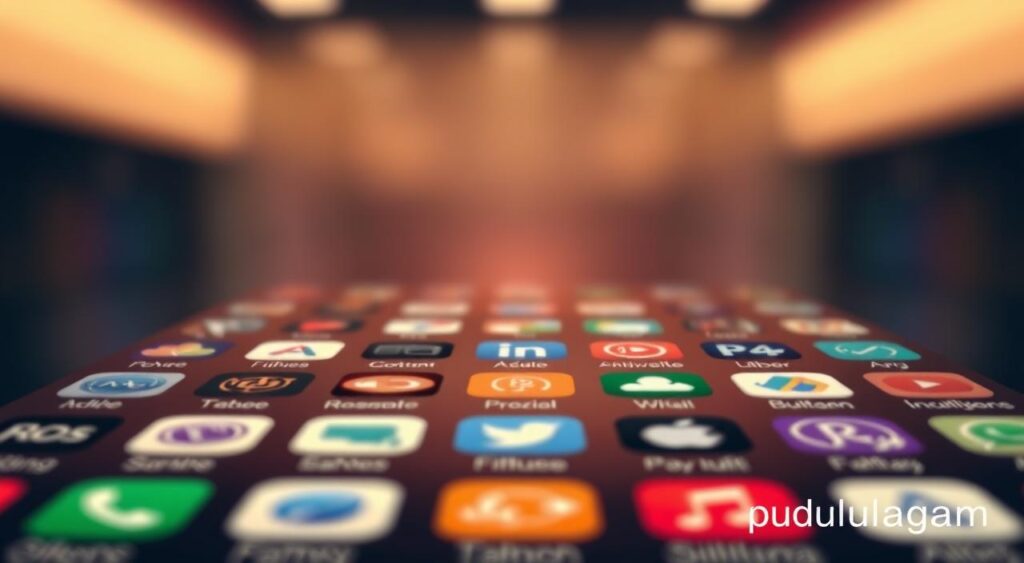
Folders and Pages Structure
Folders on your Home Screen can also hide apps. When you make a folder, it can hold many apps. If you have lots of apps, they might be on different pages in the folder. Knowing how to navigate these folders and pages is essential to find hidden apps.
By understanding the App Library and how folders and pages work, you can easily find and manage hidden apps. This keeps your iPhone organized and easy to use.
Signs That You Have Hidden Apps
Wondering if you have hidden apps on your iPhone? There are clear signs to look for.
Hidden apps can show up in different ways. It’s key to know the signs they leave behind.
Unexplained Storage Usage
Unexplained storage usage is a big clue. If your iPhone’s storage is being used more than usual, hidden apps might be the reason.
To check storage, go to Settings > General > iPhone Storage. You’ll see how much each app uses. If apps you don’t remember installing are using a lot of space, it could mean you have a hidden app.
Missing Apps in Spotlight Search
Another sign is when apps don’t show up in Spotlight Search. If you can’t find an app you know you have, it might be hidden.
To find out, do a Spotlight Search by swiping down from the middle of your screen. Type the app’s name. If it’s not there, check the App Library or other folders. It might be hidden or misplaced.
Method 1: Finding Hidden Apps Through Spotlight Search
Spotlight Search is a great tool for finding hidden apps on your iPhone. It helps you quickly find apps, files, and more on your device.
Accessing Spotlight Search
To start using Spotlight Search, you have two options:
Swiping Down Technique
On your iPhone’s Home Screen, swipe down from the middle. This opens the Spotlight Search bar. Type in the app name you’re looking for.
Using Search Bar
Or, if you’re on the first Home Screen page, swipe right. This takes you straight to Spotlight Search.
Effective Search Techniques
To find hidden apps with Spotlight Search:
- Type the app name in the search bar.
- Use keywords related to the app’s function or name.
- If it’s installed, it should show up in search results, even if hidden.
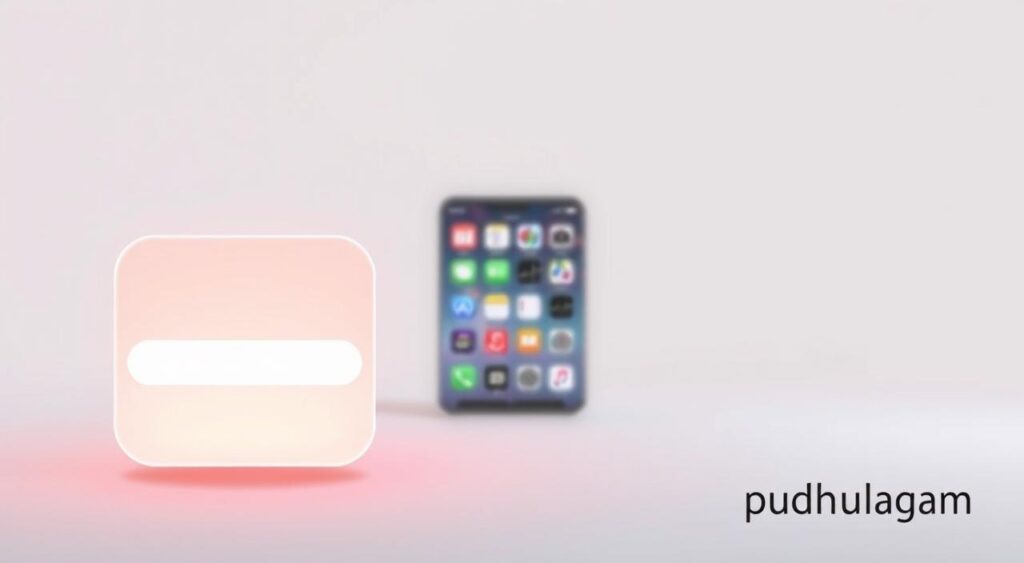
What to Do When Apps Don’t Appear in Search
If an app doesn’t show up in Spotlight Search, it might be due to restrictions or settings. Check these:
| Possible Cause | Solution |
|---|---|
| App is restricted | Check Screen Time settings to ensure the app isn’t restricted. |
| Spotlight Search is disabled for apps | Go to Settings > Siri & Search, and ensure that “Apps” is enabled for Spotlight Search. |
| App is not installed properly | Try restarting your iPhone or reinstalling the app. |
By following these steps and tips, you can use Spotlight Search to find hidden apps on your iPhone.
Method 2: Discovering Hidden Apps in the App Library
To find hidden apps, just go to the App Library. It’s easy and works well. Apple created the App Library to help organize apps into categories. This makes it simpler to find and manage apps.
Navigating to the App Library
To get to the App Library, swipe left on your home screen until you hit the last page. There, you’ll see apps sorted into groups like Social, Productivity, and More. It’s great for finding apps that are hidden or moved off the home screen.
Using Categories and Alphabetical List
The App Library has two main ways to show apps: Categories and Alphabetical List. Knowing how to use these is key to finding hidden apps.
Category View Navigation
In the Category View, apps are sorted by what they do. For example, all social media apps are under “Social”. Just tap on the category name to see all the apps in it.
Alphabetical List Searching
The Alphabetical List shows all your apps in order. It’s handy if you remember the app’s name. To see it, tap the ‘A-Z’ tab at the top of the App Library screen.
| Feature | Description | Benefit |
|---|---|---|
| Category View | Apps are grouped by functionality | Easy to find related apps |
| Alphabetical List | All apps listed alphabetically | Quick to locate a specific app |
Finding Apps Hidden in App Library Categories
Once you’re in the App Library, finding hidden apps is easy. Look through the categories or use the Alphabetical List. If an app is hidden, it will be here, letting you access or move it back to your home screen.
Using the App Library helps iPhone users manage their apps better. It makes finding hidden apps simple. This feature improves how you handle your apps overall.
Method 3: Checking for Hidden Home Screen Pages
To find hidden apps, it’s key to check your iPhone’s Home Screen pages. Apps might be hidden, not in the App Library or folders, but on other Home Screen pages.
Entering Home Screen Edit Mode
To start, you must enter Home Screen edit mode. To do this, touch and hold any app icon on your Home Screen until the icons start to jiggle. This mode lets you manage your Home Screen pages, including finding hidden ones.
Revealing Hidden Pages
In edit mode, look for hidden Home Screen pages with two main signs: the Page Dots Interface and the Checkmark System.
Page Dots Interface
At the bottom of your screen, you’ll see dots for each Home Screen page. Hidden pages will show up as dots, even if you can’t see them.
Checkmark System
As you scroll through the dots, each page has a checkmark if it’s visible. Hidden pages won’t have this checkmark.
![]()
Restoring Hidden Home Screen Pages
To bring back a hidden page, tap on the page dot to make it visible again. Make sure the checkmark appears under the page thumbnail. After making changes, tap “Done” to leave edit mode. Your hidden apps should now be on the restored page.
By following these steps, you can find and restore hidden Home Screen pages on your iPhone. This makes it easier to find any missing apps.
Method 4: Uncovering Apps in Nested Folders
iPhone users often find it hard to find apps in deep folders. This method helps you explore your iPhone’s folder structures to find hidden apps.
Exploring Folder Structures
First, understand how your apps are organized. Nested folders are folders inside other folders, holding many apps. Start by looking at your home screen folders and find ones with more folders inside.
Finding Apps in Multi-Page Folders
After finding a nested folder, check if it has more than one page. You can do this by swiping left or right in the folder.
Swiping Through Folder Pages
To move through folder pages, open the folder and swipe left or right. This way, you can find apps not on the first page.
Folder Organization Patterns
Knowing how your folders are set up can help. Some people sort apps alphabetically, while others group similar ones together. Spotting these patterns can help you find apps faster.
Reorganizing Folder Contents
If your apps are spread out in many folders, think about reorganizing them. You might put similar apps in one folder or remove unused folders to clean up your screen.
By exploring and reorganizing your folders, you can find hidden apps and make your iPhone easier to use.
Method 5: Using Settings to Find All Installed Apps
The Settings app on your iPhone is a treasure trove for finding all installed apps. By exploring the Settings menu, you can easily find a detailed list of your apps.
Checking App List in iPhone Storage
To find all installed apps, start by opening the Settings app. Scroll down and tap on “General” and then select “iPhone Storage“.
Storage Menu Navigation
In the iPhone Storage section, you can see a list of your apps and how much space they use. This is great for finding out which apps are taking up a lot of space.
Sorting and Filtering Options
In the iPhone Storage menu, you can sort apps by storage usage or name. This makes it easier to organize and find the apps you have installed.
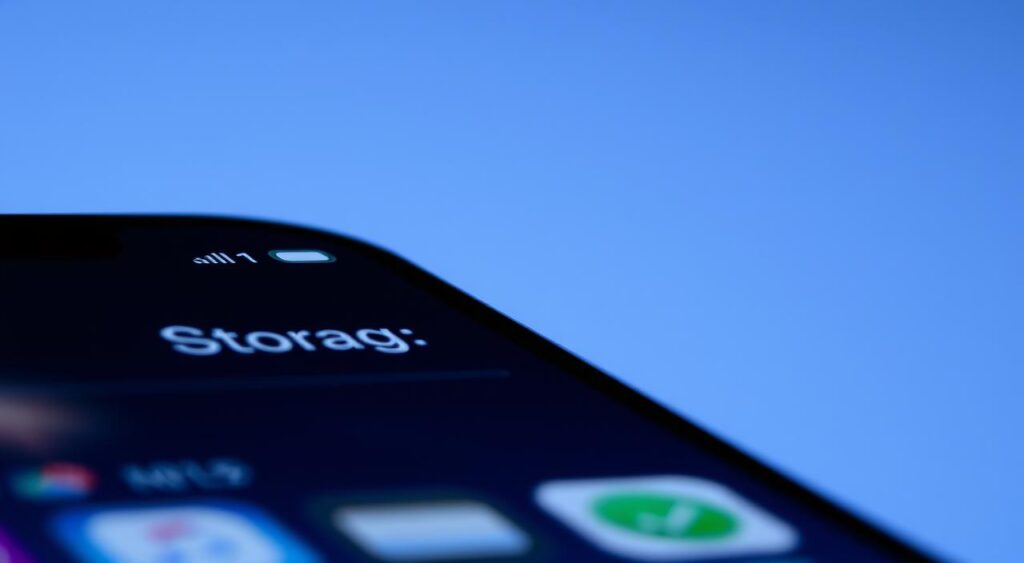
Reviewing App Permissions Lists
To check installed apps, look at the app permissions lists. Go to Settings > Privacy, and then check the permissions for services like Location Services and Contacts. This shows which apps have certain permissions.
By following these steps, you can use the Settings app to find and manage all apps on your iPhone.
Method 6: Revealing Restricted Apps with Screen Time
Screen Time is more than just tracking app use. It can also show you apps you’ve restricted on your iPhone. This is great for finding apps you’ve limited or hidden because of Content & Privacy Restrictions.
Accessing Screen Time Settings
To begin, open the Settings app on your iPhone. Tap on Screen Time. If Screen Time isn’t on, you’ll need to turn it on and set it up. After it’s on, you can see your screen time and look for restricted apps.
Checking Content & Privacy Restrictions
In Screen Time settings, tap on Content & Privacy Restrictions. This lets you see and change your iPhone’s restrictions. You’ll find two key parts: Allowed Apps and Content Restrictions.
Allowed Apps Section
In the Allowed Apps section, you’ll see apps you can use. Any app not here is restricted and might be hidden if you don’t know it’s there.
Content Restrictions
The Content Restrictions area shows what content is blocked on your iPhone. This includes apps, web content, and more. Looking at these settings can help you understand why some apps are hidden.
Modifying App Restrictions
If you find restricted apps, you can change these settings. Just toggle the switch next to the app to allow it. This will make the app visible again, putting it back on your Home Screen or in the App Library.
Method 7: Finding Hidden System Apps
Hidden system apps are key to an iPhone’s features. Finding them needs some tech skills. These apps aren’t listed like regular apps and handle system tasks.
Understanding Built-in Hidden Apps
Built-in hidden apps are part of the iPhone’s OS. They manage system functions. These apps aren’t for users to interact with but are vital for the device’s work.
These apps are made by Apple to boost the iPhone’s performance and security. Even though they’re not visible by default, knowing how to find them can offer insights into the device’s inner workings.
Accessing Developer and Diagnostic Tools
Developer and diagnostic tools help find hidden system apps. You can use specific iPhone settings and configurations. For example, some diagnostic tools are in the Settings app, under Privacy and Analytics.
| Tool | Description | Access Path |
|---|---|---|
| Analytics Data | Provides detailed analytics about iPhone usage | Settings > Privacy > Analytics & Improvements |
| Diagnostics | Offers diagnostic information about the device | Settings > Privacy > Diagnostics |
By understanding and accessing these tools, users can learn more about their iPhone. They might even find hidden system apps.
How to Unhide Apps and Restore Them to Your Home Screen
Learn how to unhide and restore apps to your iPhone’s Home Screen with our guide. This makes your App Library cleaner and your Home Screen more organized. It’s easy and takes just a few steps.
Adding Apps Back to Home Screen from App Library
You can unhide apps from the App Library in two ways: the Long-Press Method or the Edit Home Screen Method. Both are simple and effective.
Long-Press Method
First, go to the App Library and find the app you want to unhide. Long-press on it until a menu shows up. Then, choose “Add to Home Screen” to bring it back.
Edit Home Screen Method
For the Edit Home Screen Method, start by entering edit mode on your Home Screen. Tap the “+” icon to add a new app. Pick the app you want to unhide from the App Library.
Restoring Apps from Folders
If your apps are hidden in folders, you can unhide them by opening the folder. Drag the app icon out of the folder and onto the Home Screen. This will unhide the app.
| Method | Description | Steps |
|---|---|---|
| Long-Press | Use the App Library to add apps back to Home Screen | 1. Navigate to App Library 2. Long-press on the app 3. Select “Add to Home Screen” |
| Edit Home Screen | Edit Home Screen to add new apps | 1. Enter edit mode on Home Screen 2. Tap “+” icon 3. Select the app to add |
By following these steps, you can easily unhide and restore apps to your iPhone’s Home Screen. This makes it more organized and easier to use.
Common Reasons Why Apps Are Hidden on iPhone
iPhone apps can hide for many reasons, often tied to the device’s organization tools. Knowing why can help you keep your apps tidy.
iOS Automatic Organization
iOS has a feature called the App Library. It sorts your apps into categories to make them easier to find. But, it can sometimes hide apps from your home screen.
When you get a new app, it might not show up on your home screen if you’ve turned on the App Library. Instead, it goes to the App Library, where you can find it.
| Feature | Description | Impact on App Visibility |
|---|---|---|
| App Library | Automatically organizes apps into categories | Apps may be hidden from home screen |
| Automatic Organization | Sorts apps based on usage and type | Can lead to apps being moved to different screens or folders |
Third-Party App Behavior
Some third-party apps can act in ways that make them seem hidden. For example, some apps might hide within another app or folder.
Examples include:
- Apps that create nested folders, making it hard to find them.
- Apps that have a “hide” feature, which can be triggered by accident or on purpose.
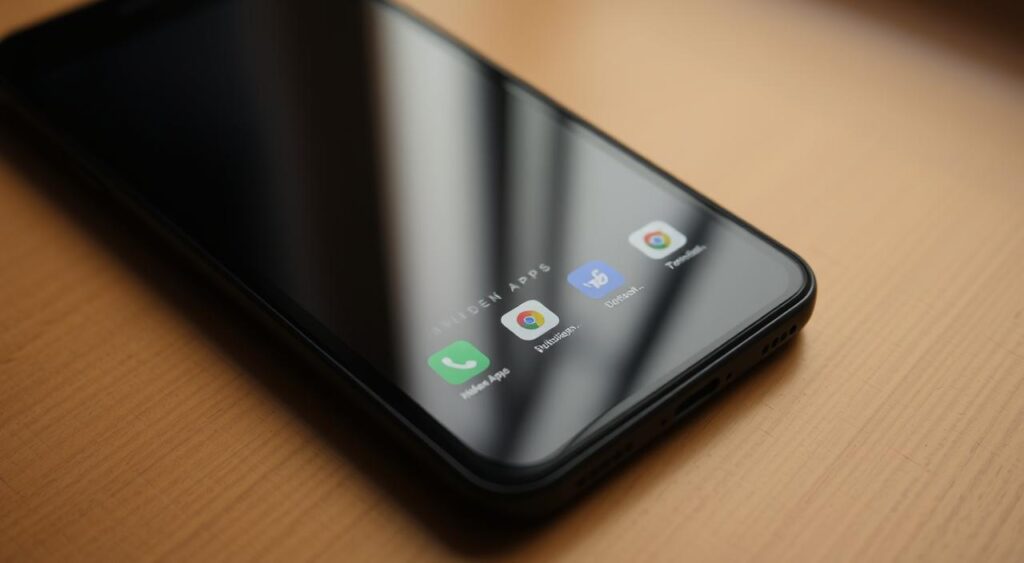
By understanding these behaviors, you can manage your apps better and avoid them getting hidden.
Preventing Apps from Being Hidden Accidentally
To keep your iPhone apps organized and easy to find, you need to know a few things. Understanding your device’s settings and features is key. This way, you can avoid apps from being hidden by mistake.
Using App Library Settings
The App Library on your iPhone might hide apps from your Home Screen. To stop this, you can tweak your App Library settings. By default, new apps go straight to the App Library. You can change this by going to Settings > Home Screen and picking your choice.
For example, you can make new apps appear on your Home Screen. This way, they stay visible.
Setting Up Home Screen Organization Rules
Organizing your Home Screen well can also prevent apps from getting hidden. You can make folders and sort your apps in a way that makes sense to you. To do this, just touch and hold an app icon until it wiggles. Then, drag it onto another app to make a folder.
You can also use the App Library to keep your Home Screen neat. Let it organize your apps automatically. This way, your favorite apps stay on the Home Screen. Less used apps will be organized in the App Library.
By using these tips, you can greatly lower the chance of apps getting hidden by mistake. This makes it easier to find and use the apps you need.
Parental Controls and Hidden Apps
Parental controls are key in managing hidden apps on iPhones. They help limit access to certain apps and change how they appear on the device.
Setting Up Appropriate Restrictions
To manage hidden apps well, setting up the right restrictions is vital. Use Screen Time and content restrictions to limit app access.
Age-Appropriate Content Settings
Setting age-appropriate content settings is a must. These settings help hide certain apps from users.
App Download Limitations
Limiting app downloads is also important. This lets you control which apps can be installed, affecting visibility.
Monitoring App Downloads and Usage
Keeping an eye on app downloads and usage is essential. Screen Time helps track app use and set usage limits.
Using parental controls effectively helps manage visible and used apps on the iPhone. You can set download limits and monitor app use.
Privacy and Security Concerns with Hidden Apps
It’s important to understand the privacy and security risks of hidden apps today. iPhone users need to know the dangers they might face.
Legitimate vs. Suspicious Hidden Apps
Not every hidden app is bad. It’s key to tell the safe ones from the risky ones. Safe hidden apps might be system apps or ones hidden for privacy.
System Apps vs. Third-Party Apps
System apps come with the iPhone, like Mail or Health. They’re usually safe and hidden for organization. Third-party apps from the App Store can also be hidden.
Red Flags to Watch For
Watch for these signs of trouble with hidden apps:
- Unexplained data usage spikes
- Apps that are not recognized or seem suspicious
- Apps that request excessive permissions
Identifying Potentially Harmful Hidden Apps
To keep your iPhone safe, check your apps often. Use the App Library and Settings to watch app permissions and data use. If you find a bad app, delete it or ask Apple Support for help.
Being careful and informed helps iPhone users avoid hidden app dangers. This way, they can keep their digital world safe and private.
Troubleshooting Common Issues When Apps Remain Hidden
If you’re having trouble with hidden apps on your iPhone, don’t worry. There are steps you can take to fix the problem and get back to your apps.
Force Restarting Your iPhone
One easy fix is to force restart your iPhone. This can solve problems caused by software glitches. To do this, press and hold the sleep/wake button and either the volume up or down button. Keep holding until you see the “Slide to Power Off” slider.
Then, slide it to the right to turn off your device. Press and hold the sleep/wake button again until you see the Apple logo. This means your device is back on.
Updating iOS to Fix Visibility Issues
Old iOS versions can sometimes hide your apps. To check for updates, go to Settings > General > Software Update. If there’s an update, tap Download and Install to update your iOS.
This can fix many issues, including hidden apps. It improves your system’s stability and fixes bugs.
Contacting Apple Support
If you’ve tried the above steps and nothing works, it’s time to contact Apple Support. They can offer more help and solutions. You can reach Apple Support on their website, by phone, or at an Apple Store.
Be ready to share your problem and what you’ve tried so far. This will help them assist you better.
Conclusion
Managing your iPhone apps well is key for a smooth experience. We’ve looked at ways to find and manage hidden apps on your device. This helps you keep your iPhone’s home screen and App Library tidy, making your favorite apps easy to find.
We’ve shown you how to use Spotlight Search and the App Library. We also talked about finding hidden Home Screen pages and nested folders. These tips help you keep your home screen clean and enhance your iPhone use.
Learning these skills helps you handle your apps better. It stops apps from getting hidden by mistake and keeps your iPhone organized and safe. Now, you’re ready to manage your iPhone apps effectively, getting the most out of your device.
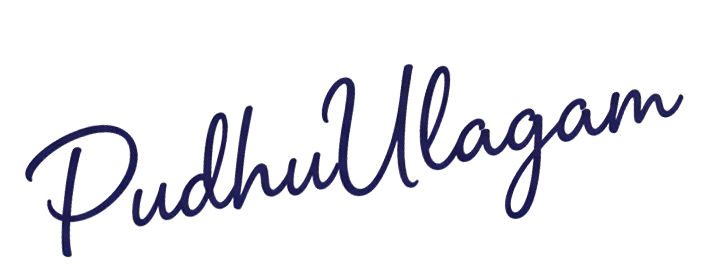

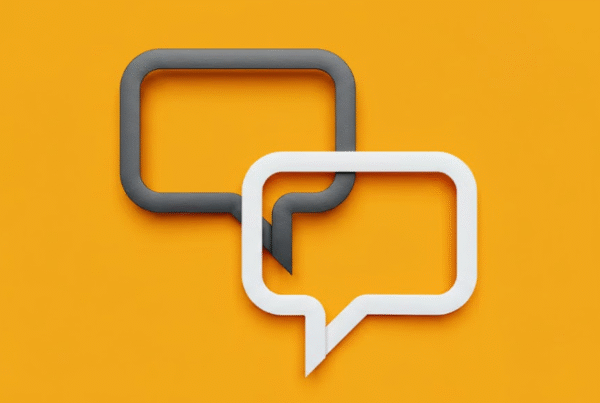
Meta Platforms Stock & Earnings: Complete Guide (2025 Best Update)